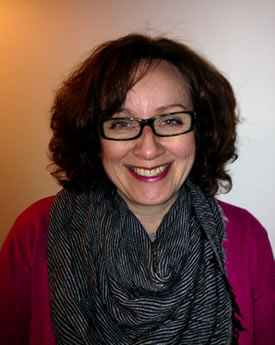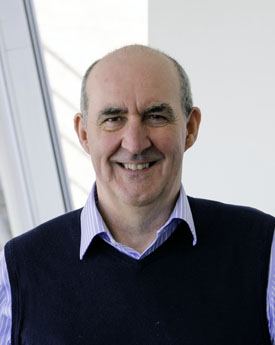
 Bev Evans and Norman Crump, both of Lancaster University Management School, report from a recent meeting where participants discussed the transition from hospital to care home. (913 words)
Bev Evans and Norman Crump, both of Lancaster University Management School, report from a recent meeting where participants discussed the transition from hospital to care home. (913 words)
According to the National Audit Office (2016), between 2013 and 2015, official delayed transfers of care rose 31 per cent and in 2015 accounted for 1.15 million bed days – 85 per cent of patients occupying these beds were aged over 65. Since 2010, waits for beds in nursing homes increased by 63 per cent. Across Morecambe Bay University Hospitals NHS Foundation Trust (MBUHT) waiting for a care home place can be a significant cause of delay.
In early October, Cumbria Registered Social Care Managers’ Network, Kendal Integrated Care Community (ICC) and MBUHT convened a special ‘Let’s Talk’ discussion group which brought together local care home managers, social workers, hospital discharge coordinators, ward staff and nurse practitioners from the community. The aim of the meeting was to explore how the transition from hospital to a care home could be improved. ‘Let’s Talk’ is a specially facilitated session delivered by King’s College London, Lancaster University, Dignity in Dementia and the South Lakes Registered Social Care Managers Network. Meetings are designed to enable participants to see issues from each other’s perspectives and to afford time to critically reflect on a particular ‘wicked issue’.
The first issue to be addressed was ‘trust’. There was some frustration on the part of the discharge coordinators that care home managers did not take their assessments at face value and would always want to come into the hospital and ‘see for themselves’. The care home managers explained why this was the case. They described how they were held personally responsible by the Care Quality Commission (CQC) for ensuring that their home was able to meet the needs of their residents. The care home managers explained that they were not just looking at the ‘patient’ in isolation, but were assessing for potential ‘fit’ with the other residents already living in the home. This assessment included knowing they could accommodate the patient’s clinical needs based on their staff expertise and availability of specialist equipment (that might already be in use).
Care home managers were also frustrated that when they visited the hospital (which could often take-up a good part of their day) there was often no one available to talk to them about the needs of the person being considered for a place in their home. The participants discussed the problem of communication and care plans for patients being discharged. Care homes require far more information than is often shared; they need more medical supplies than is often sent (ideally to last two weeks supply to allow for GP registration). However, the hospital discharge coordinators explained that they do not hold those quantities of supplies; two weeks supply for one patient would ‘wipe out the stores’. A nurse said that some of the lack of information occurred because of the drive towards ‘paper light’ records (i.e. computerised rather than handwritten notes).
More concerns were raised in terms of communicating about end of life issues; care homes and GPs often found that this had not been discussed with families whilst the patient was in hospital. It was reported that there were often delays in getting patients into a care home for end of life care. There was a general consensus in the room that most people did not want to die in hospital. The community nurse practitioner talked about an initiative that had now ended but that had increased opportunities to die outside of hospital from 86% to 94%. One care home manager said it was frustrating when patients were discharged as requiring palliative care by hospital staff (to secure a speedier discharge than normal) when actually the patient had longer term needs linked to dementia.
One area where it was recognised that organisational procedures could be improved was around how vacancies in care homes are being reported. Care home managers noted that they reported their vacancies each week to the Clinical Commissioning Group, but that this was not getting through to the discharge coordinators who wasted a lot of their time constantly phoning round. Getting a place in a care home seemed to be something of a lottery that did not always reflect choice and control. There was a suggestion that ‘local beds should be for local people’, and that it makes no sense for a patient from ‘A’ to be placed in place ‘B’ and a patient from ‘B’ to be placed in location ‘A’. This often causes great difficulties for families in terms of visiting arrangements. How to better manage these logistics without causing unnecessary delays remains a considerable challenge. Quality was also raised as an important issue. A dilemma for discharge coordinators arose when a care home had vacancies but it had previously been in special measures. Both care home managers and discharge coordinators said they would never try to hide that information from families and would always encourage them to go and look around the home, talk to the staff and make up their own minds.
Finally, in terms of the way forward, there was some discussion about ‘Trusted Assessor’ schemes whereby some hospitals have begun to appoint someone to undertake a dedicated care home liaison role. From the perspective of the care home managers the perception was that this scheme would only work if the person appointed was able to genuinely earn their trust and respect. Meetings such as this were seen as the foundation for this kind of relationship building and a means of maintaining the momentum of what it means to be an integrated care community.
Bev Evans and Norman Crump are based at the Lancaster University Management School.
The Convenors of this meeting were Dr Michelle Cornes (Social Care Workforce Research Unit, King’s College London) and Alison Nicholson (Kendal ICC).
Acknowledgements
‘Let’s Talk’ is funded through the Policy Institute at King’s College London and is part of an ESRC Transformation Fellowship Scheme.